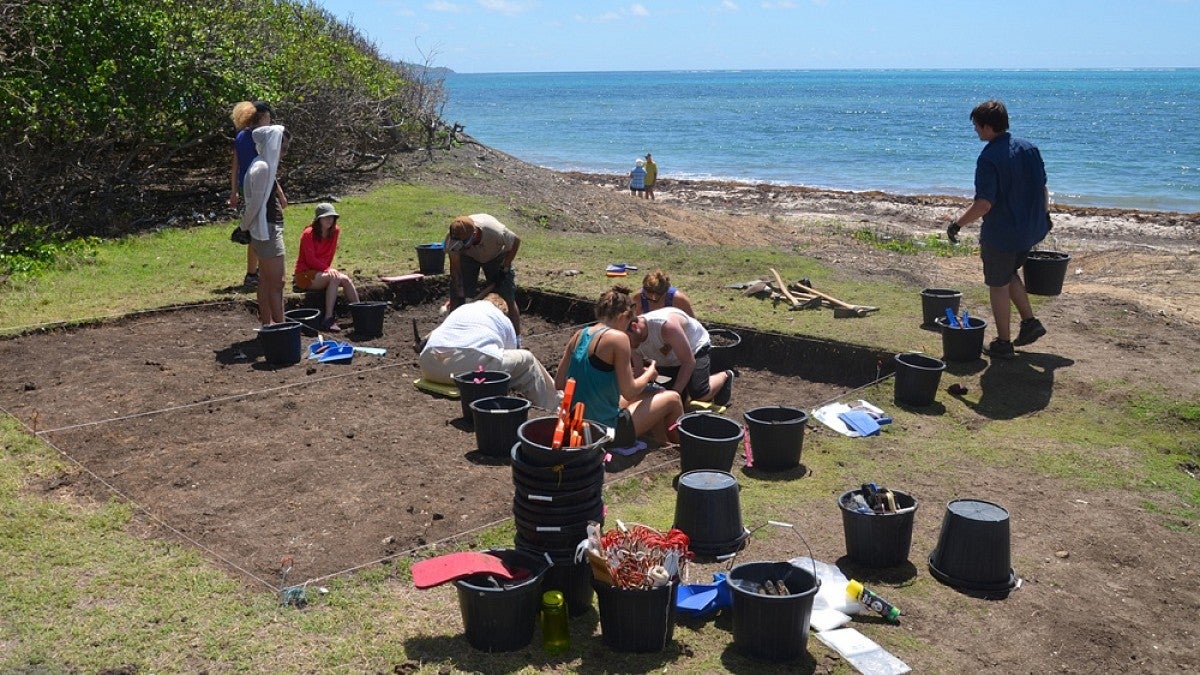People first settled the Caribbean thousands of years ago, but their exact migration routes have long remained a puzzle. Now, a new study coauthored by eight UO researchers is piecing that puzzle together through a rigorous reexamination of archaeological data.
Published in the journal Science Advances, the study reports evidence that the first Caribbean islanders traveled directly from South America to the northern Caribbean beginning about 5,800 years ago, initially settling Cuba, Hispaniola and Puerto Rico in the Greater Antilles and smaller islands in the northern Lesser Antilles before further colonizing islands to the south.
“This scenario contradicts a competing ‘stepping stone’ model that many archaeologists still subscribe to, which asserts a south-to-north settlement beginning in the Lesser Antilles,” said Matthew Napolitano, the study’s lead author and a doctoral student in the Department of Anthropology.
Critics of the stepping stone model point out that trade winds and ocean currents in the region would have made travel toward the southern Lesser Antilles difficult for expeditions from the South or Central American mainlands and that early seafarers would likely have been attracted to the larger, more productive islands of the Greater Antilles, settling those first before gradually migrating southward.
The new study is the culmination of a graduate student project supervised by Scott Fitzpatrick, associate director of the UO’s Museum of Natural and Cultural History and a professor in the Department of Anthropology. Conducted over a four-year period by Napolitano and Fitzpatrick along with graduate students Robert DiNapoli, Jessica Stone and several others, the project was designed to put the stepping stone model and other Caribbean settlement hypotheses to the test.
The north-to-south pattern was borne out in the team’s research, which involved tracking down and reevaluating nearly 2,500 radiocarbon dates reported from cultural sites on 55 Caribbean islands.
The authors assessed each date’s reliability using strict criteria related to the geologic and archaeological contexts of the dated material, the quality of the samples and the lab conditions under which the materials were analyzed. The dates were then subjected to rigorous statistical analyses, resulting in a new and exceptionally robust colonization model.
“By carefully applying these criteria, we were able to improve confidence about the reported dates, as well as whether the dated materials actually relate to human activity,” Fitzpatrick said.
To the researchers’ surprise, just over half of the analyzed radiocarbon dates passed muster, despite more than 50 years of archaeological scholarship in the region.
“Our analysis of the resulting acceptable dates, which represent human occupations on 26 islands, provides the first reliable model for initial arrival in the region,” said Fitzpatrick, an expert in island and coastal archaeology whose research focuses on the Caribbean and Pacific.
The study has also resulted in the largest publicly accessible database of radiocarbon dates for the region.
“Human colonization of the Caribbean is one of the least understood population dispersals in the Americas,” Napolitano said. “This work helps solve some of the mystery while providing a ‘best practices’ approach to collecting and reporting radiocarbon dates.”
—By Kristin Strommer, Museum of Natural and Cultural History


